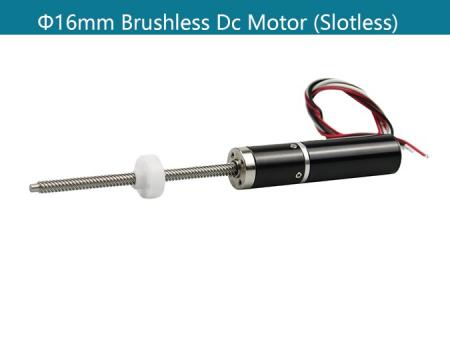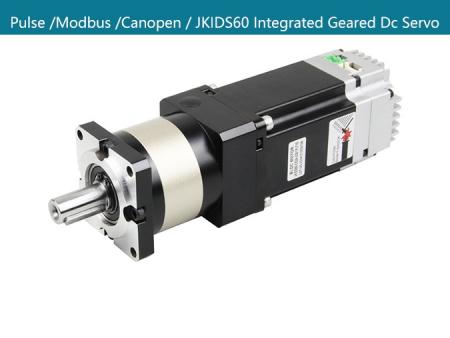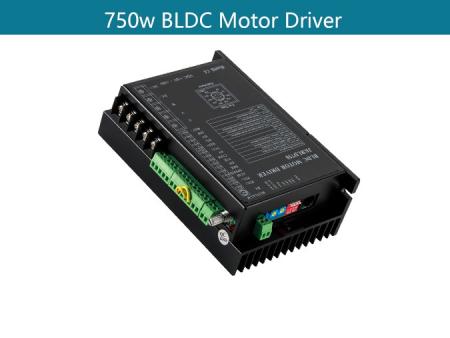How to eliminate the noise of DC motor?
The DC motor is connected to the power supply through the commutator brush. When the current flows through the coil, the magnetic field generates a force, and the force makes the DC motor rotate to generate torque. The speed of the brushed DC motor is achieved by changing the working voltage or magnetic field strength. Brush motors tend to generate a lot of noise (both acoustic and electrical). If these noises are not isolated or shielded, electrical noise can interfere with the motor circuit, resulting in unstable motor operation. Electrical noise generated by DC motors can be divided into two categories: electromagnetic interference and electrical noise. Electromagnetic radiation is difficult to diagnose, and once a problem is detected, it is difficult to distinguish it from other sources of noise. Radio frequency interference or electromagnetic radiation interference is due to electromagnetic induction or electromagnetic radiation emitted from external sources. Electrical noise can affect the effectiveness of circuits. These Noise can lead to simple degradation of the machine.
When the motor is running, sparks occasionally occur between the brushes and the commutator. Sparks are one of the causes of electrical noise, especially when the motor starts, and relatively high currents flow into the windings. Higher currents usually cause resulting in higher noise. Similar noise occurs when the brushes remain unstable on the commutator surface and the input to the motor is much higher than expected. Other factors, including insulation formed on the commutator surfaces, can also cause current instability.
EMI can couple into the electrical parts of the motor, causing the motor circuit to malfunction and degrade performance. The level of EMI depends on various factors such as the type of motor (brush or brushless), drive waveform and load. Generally, brushed motors will generate more EMI than brushless motors, no matter which type, the design of the motor will greatly affect the electromagnetic leakage, small brushed motors sometimes generate large RFI, mostly simple LC Low pass filter and metal case.
Another noise source of the power supply is the power supply. Since the internal resistance of the power supply is not zero, in each rotation cycle, the non-constant motor current will be converted into a voltage ripple on the power supply terminals, and the DC motor will generate during high-speed operation. noise. To reduce electromagnetic interference, motors are placed as far away from sensitive circuits as possible. The metal casing of the motor usually provides adequate shielding to reduce airborne EMI, but the additional metal casing should provide better EMI reduction.
Electromagnetic signals generated by motors can also couple into circuits, forming so-called common-mode interference, which cannot be eliminated by shielding and can be effectively reduced by a simple LC low-pass filter. To further reduce electrical noise, filtering at the power supply is required. This is usually done by adding a larger capacitor (eg 1000uF and above) across the power supply terminals to reduce the effective resistance of the power supply and thus improve transient response.
Capacitance and inductance generally appear symmetrically in the circuit to ensure the balance of the circuit, form an LC low-pass filter, and suppress the conduction noise generated by the carbon brush. The capacitor mainly suppresses the peak voltage generated by the random disconnection of the carbon brush, and the capacitor has a good filtering function. The installation of the capacitor is generally connected to the ground wire. The inductance mainly prevents the sudden change of the gap current between the carbon brush and the commutator copper sheet, and the grounding can increase the design performance and filtering effect of the LC filter. Two inductors and two capacitors form a symmetrical LC filter function. The capacitor is mainly used to eliminate the peak voltage generated by the carbon brush, and the PTC is used to eliminate the impact of excessive temperature and excessive current surge on the motor circuit.
Final Conclusion:
To reduce EMI levels, motors should be placed as far away from sensitive circuits as possible to reduce interference, and additional metal enclosures should be provided. In order to suppress electromagnetic interference in the case of common mode interference, a simple LC low-pass filter is built in. By connecting the motor with a simple speed controller, other electrical noise can also be eliminated, and a higher-order LC filter can further improve noise filtering performance.
Jkongmotor Company Brushless DC motors Types:
 |  |  |  |  |
| 24v 36v regular / or customized | 24V 36V / or customized | 24V 36V / or customized | 48V / or Customized | 48V / or Customized |
| Gearbox / Brake / Encoder / Driver / Shaft Customized | Gearbox / Brake / Encoder / Integrated Driver / Shaft Customized | Gearbox / Brake / Encoder / Integrated Driver / Shaft / Fan Customized | ||
| 42mm Round Brushless Dc Motor | 42mm Square Brushless Dc Motor | 57mm Brushless Dc Motor | 60mm Brushless Dc Motor | 80mm Brushless Dc Motor |
| / | IDS42 Integrated Servo Motor | IDS57 Integrated Servo Motor | IDS60 Integrated Servo Motor | IDS80 Integrated Servo Motor |
 |  |  |  |  |
| 48V / or Customized | 310V / or Customized | Coreless Dc Motors | IDS Integrated Servo Motors | Brushless Dc Motor Driver |
| Gearbox / Brake / Encoder / Driver / Shaft Customized | Gearbox / Brake / Encoder / Driver / Shaft Customized | |||
| 86mm Brushless Dc Motor | 110mm Brushless Dc Motor | |||
View More(Total0)Comment Lists